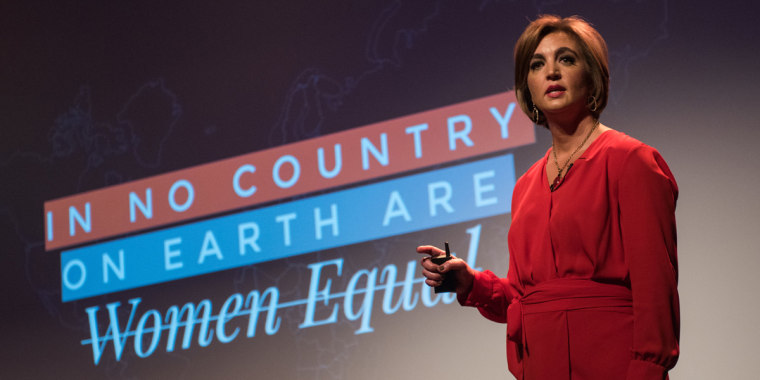300,000 Black women have left the labor force in 3 months. It’s not a coincidence.

In just three months, nearly 300,000 Black women left the U.S. labor force. Their labor force participation rate has now dropped below that of Latinas for the first time in over a year. And more than 518,000 Black women still haven’t returned to the labor force since the pandemic began, leaving their real unemployment rate just above 10 percent.
This isn’t a coincidence. It’s the result of federal policy choices — most immediately, sweeping job cuts across public-sector agencies where Black women have long held the strongest foothold in middle-class employment.
Agencies like the Department of Education and the Department of Health and Human Services have seen dramatic reductions in staff — up to 50 percent in some cases. These are not just institutional losses. They represent the disappearance of stable, often well-paying jobs that historically provided economic security to Black women and the families they support.
How we got here: The federal pullback
For decades, the public sector has served as a lifeline for Black women shut out of opportunity elsewhere in the economy. Black women make up over 12 percent of the federal workforce — almost double their share of the labor force overall. These roles offer not only pensions and benefits, but more equitable pay than the private sector, where wage gaps remain entrenched.
That infrastructure is now eroding at pace. Beginning in early 2025, a wave of federal downsizing — justified as “efficiency reforms” — has disproportionately hit jobs in education, health, and community-facing roles. These are the very sectors where Black women are concentrated.
And as federal budgets shrink, the effects ripple through state and local governments. When public school funding dries up or health departments are hollowed out, it’s often pink-collar jobs held by Black women that are first on the chopping block.
DEI dismantled
At the same time, we’ve witnessed an aggressive rollback of diversity, equity, and inclusion (DEI) programs across the federal government and private sector.
In government, DEI roles were among the first eliminated under the current administration. Internally, directives signaled that race-conscious dialogues — even when supported by data — are now restricted or suspect, reinforcing a chilling effect on equity-driven decision-making.
In the private sector, DEI budgets have been slashed or frozen. Job postings for DEI roles dropped by 43 percent between August 2022 and July 2024, and the total number of DEI positions fell from 20,000 in 2023 to 17,500 by April 2025. Companies have also scaled back mentorship programs, slowed inclusive hiring, and deprioritized equity benchmarks — treating DEI as expendable — even as the data proves otherwise.
The courts are reinforcing this disturbing trend. In 2024, a federal appeals court blocked the Fearless Fund from offering grants exclusively to Black women entrepreneurs, ruling that the program likely violated Section 1981 of the Civil Rights Act. The decision sent a clear signal: race-conscious private initiatives are now more exposed to legal attack, deterring investment in equity just when it’s needed most.

Broader policy blind spots
The economic risks for Black women don’t stop at employment losses. Other recent policy changes compound the threat to long-term financial stability.
Inflation and gender pricing. The current inflation rate for goods marketed to women — like footwear and apparel — is 177 percent higher on average than for those marketed to men. This isn’t because women buy more — it’s because gender is built into how prices are taxed and structured.
And for Black women, who earn just $0.64 for every dollar earned by white, non-Hispanic men, the math is stark: they have 36 percent less coming in and face nearly triple the inflation on essentials going out. That’s not a gap. That’s an economic trap.
Student loan debt. The so-called “Big Beautiful Bill” promises relief, but women will pay $13.9 billion more than men under the new plan. And it hits Black women hardest, because repaying student debt takes longer, and they accrue more interest while struggling to cover essentials; in fact, 57 percent of Black women with student loans report difficulty meeting basic expenses.
Automation and exclusion from tech. Black women are among the most vulnerable to automation, with 21 percent working in jobs highly exposed to AI-driven disruption. Yet they hold just 3 percent of computing-related jobs. Between February and April 2025, Black women lost 318,000 jobs — even as the overall economy added jobs.
This is not just a mismatch. It’s a structural exclusion from both the current economy and the “next” one.
The economic fallout
This policy-driven displacement has far-reaching consequences — not just for Black women — but for the entire economy.
More than 51 percent of Black households with children are led by breadwinner mothers, many of whom are the sole source of income in their homes. When these women are pushed out of the workforce, entire families lose their economic foothold, threatening housing stability, consumer spending and educational outcomes for children. These are not isolated setbacks — they are systemic losses.
We feel the shockwaves in the country’s GDP. Every one-point drop in women’s labor force participation costs the U.S. economy an estimated $146 billion in lost GDP.
And when that drop is concentrated among Black women — who are disproportionately breadwinners, caregivers, and entrepreneurs — the ripple effects go even deeper.
Put simply: when Black women are pushed out of the labor force, we all lose.
A policy reset
The good news? This is not an inevitable outcome, it’s the result of policy choices. It can be undone by better ones:
- Restore and protect public-sector roles in education, healthcare, and care work — fields where Black women disproportionately contribute and lead.
- Reinstate and strengthen DEI programs across federal agencies and corporations. These are not feel-good extras — they are performance drivers.
- Build inclusive pathways into tech and innovation sectors where growth is happening. That means access to skilling, capital and transparent hiring practices.
- Audit economic policy across trade, tax, labor and education through an intersectional gender lens. Policies aren’t gender neutral — they’re gender ignorant. When we’re blind to gender in policy, we guarantee an unequal outcome. For instance, removing gender from the statistical calculation in trade codes would be a giant step toward closing the gender tariff gap that inflates prices for women by billions each year.
We cannot afford to leave Black women behind. Not morally. Not economically. When we protect Black women’s place in the workforce, we’re not just closing opportunity gaps — we’re closing performance gaps across the entire economy.




